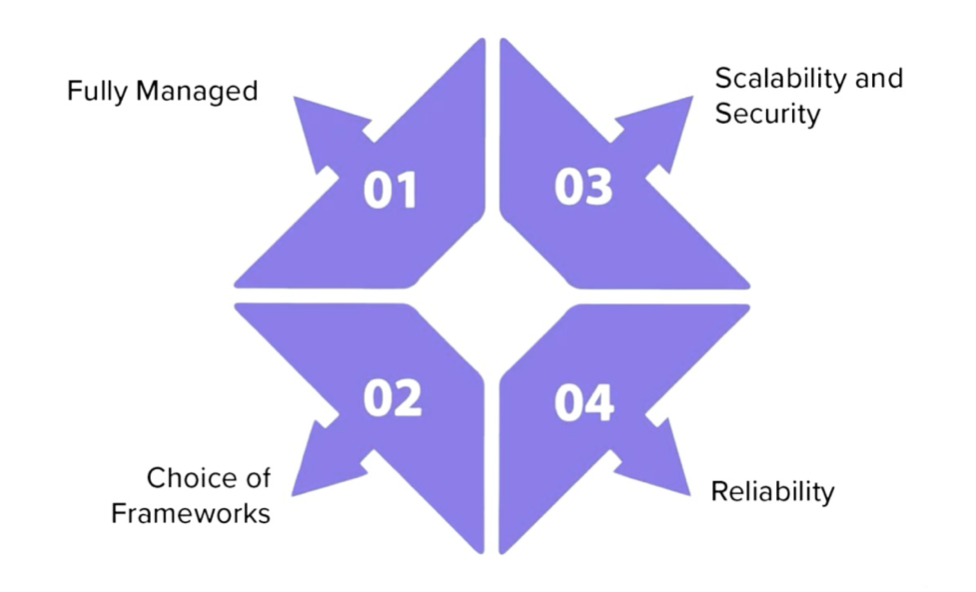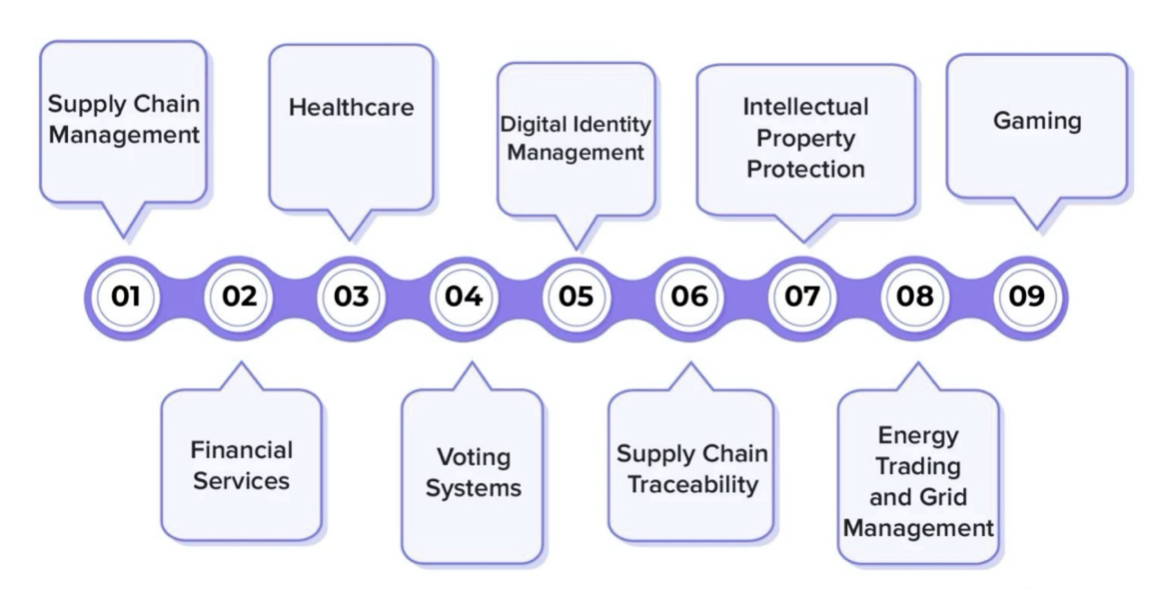For enterprises, blockchain remains a preferred solution for enhancing security, ensuring transparent data practices, and optimizing workflows. However, the transition from recognizing these advantages to deploying a fully functional blockchain application introduces complexities.
Implementing a blockchain application on the web or mobile platforms involves challenges such as high costs, ongoing maintenance, and technically demanding scaling processes. To address these issues, the blockchain industry has embraced a solution known as BaaS – Blockchain as a Service.
Similar to other everything-as-a-service offerings, BaaS provides an external service platform enabling businesses to establish the necessary blockchain infrastructure and technology for a fee. Once set up, the provider takes responsibility for managing intricate back-end operations, allowing businesses to concentrate on strengthening blockchain functionality.
In the realm of BaaS platforms, AWS Managed Blockchain consistently stands out, and this article will delve into the reasons behind its prominence.
What are AWS Managed Blockchain (AMB)?
Amazon Managed Blockchain (AMB) is a comprehensive managed service provided by Amazon Web Services, empowering developers to effortlessly create and deploy scalable blockchain networks on Hyperledger Fabric and Ethereum. This is achieved without the need for manual configuration, setup, or the management of blockchain infrastructure.

To comprehend AMB, it’s essential to explore the foundational components it relies on:
Key elements of AWS Managed Blockchain:
Ordering Service:
The default ordering service in Hyperledger Fabric, Apache Kafka, lacks optimization for storing complete transaction data history. AMB introduces QLDB technology, its own ordering service, with an immutable change log managing the entire record of uncommitted transactions.
Fabric CA and AWS Key Management Service (AWS KMS):
Utilizing AWS Key Management Service, Fabric CA serves as a Certificate Authority (CA) for Hyperledger Fabric. AWS KMS provides features such as identity registration, issuance of Enrollment Certificates (ECerts), and certificate revocation or renewal.
Analytics:
To alleviate pressure on blockchain resources, AMB allows network activity data to be sent to QLDB, facilitating in-depth analysis through the platform and specialized analytics tools.
Now, let’s explore the core benefits of AWS Managed Blockchain by dissecting its feature sets.
Benefits of AWS Managed Blockchain:

1. Fully Managed:
Simple network setup with just a few clicks.
Easy addition of new members through a voting API.
Seamless joining of public networks with secure networking, fast linking, elastic storage, data encryption, and access to open-source APIs.
2. Choice of Frameworks:
Supports Ethereum for decentralized smart contracts and applications.
Offers Hyperledger Fabric for enterprise-level applications with enhanced privacy and control.
3. Scalability and Security:
Effortless scalability with the addition of peer nodes.
Secure interactions with Hyperledger Fabric components through Amazon VPC endpoints.
4. Reliability:
QLDB technology maintains an immutable change log and records the entire history of uncommitted transactions.
Uses of Amazon-Managed Blockchain:

- Supply Chain Management: Enables a decentralized supply chain management system with transparency and end-to-end visibility. Enhances trust and reduces the risk of counterfeit products.
2. Financial Services: Facilitates safe transaction settlement, authenticated trade finance, and identity management in the financial industry.
3. Healthcare: Maintains secure patient data records, improving data sharing efficiency and patient care coordination.
4. Voting Systems: Builds transparent and resistant vote records, enhancing the integrity and security of the voting process.
5. Digital Identity Management: Secures and decentralizes Digital Identity Management, lowering the risk of identity theft.
6. Supply Chain Traceability: Establishes end-to-end traceability in complex supply chains, reducing counterfeiting risks.
7. Intellectual Property (IP) Protection: Protects IP rights by creating a decentralized registry for patents, copyrights, and trademarks.
8. Energy Trading and Grid Management: Enables decentralized energy trading platforms, optimizing energy distribution and efficiency.
9. Gaming: Facilitates decentralized networks for gaming products, allowing safe in-game asset and currency trading.
To leverage the benefits of AWS Managed Blockchain, businesses can follow a structured implementation process:
AWS-Managed Blockchain Implementation Process:

- Sign up for AWS: Create an AWS account on the AWS website with a valid payment mechanism and email address.
2. Access the AWS Management Console: Open the AWS Management Console, the central platform for managing AWS services and resources.
3. Navigate: Find the AWS Blockchain service section in the AWS Management Console and create a blockchain network.
4. Deploy Smart Contracts: After building the network, deploy smart contracts for self-executing contract terms.
5. Monitor and Secure the Network: Ensure performance and safety by using monitoring and security features provided by AWS.
6. Integrate with Other AWS Services: Seamlessly integrate blockchain in AWS with other services like AWS Identity, Amazon EC2, IAM, and AWS CloudFormation.
Partnering with a reliable development partner like O2 Technologies, a leading blockchain software development company, can further enhance the implementation journey. This partnership can unlock the full potential of AWS Managed Blockchain, offering businesses a future marked by efficiency, security, and success.
To embark on the path of effective AWS-managed blockchain implementation, reach out to the O2 Technologies team today.
